Dogs communicate in many ways, and their tails are one of the most expressive tools they have. By learning to interpret these tail signals, you can better understand what your dog is thinking and feeling. This connection can strengthen your bond and help you respond to their needs more effectively.
Different tail positions and movements can reveal a lot about your dog’s emotions.
Whether they are excited, anxious, or relaxed, their tail tells a story.
Understanding these signals helps you become a more attentive and caring pet owner.
1) Wagging to the Right
When your dog wags its tail to the right, it may signal positive emotions.
This wagging can show that your dog feels happy or excited.
You might notice this when you come home, during playtime, or when meeting new friends.
A right-side wag can also mean your dog is feeling curious and engaged with what’s going on around them.
This tail motion indicates comfort and openness.
It’s a great sign that your pup is in a good mood and ready to interact.
Understanding these signals helps strengthen the bond between you and your dog.
Pay attention to the context, as it gives clues about your dog’s feelings.
Next time you see that right wag, be sure to reward your furry friend with some love or playtime!
Tucked Between Legs
When your dog tucks its tail between its legs, it’s an important signal.
This posture often means your dog feels scared, anxious, or submissive.
You might notice this behavior in new environments or around unfamiliar people or animals.
It’s their way of expressing discomfort.
Sometimes, a tucked tail can also indicate physical problems.
If your dog seems unwell or injured, this could be a sign that something is wrong.
Pay attention to other body language too.
If your dog looks stressed or tries to hide, it’s a clear sign they need your support.
Many dogs tuck their tails when they feel threatened.
This instinct helps them appear smaller and less imposing to any potential threat.
If your dog frequently displays this behavior, consider giving them a safe space.
Creating a calm environment can help them feel more secure.
Understanding these signals is essential for building trust with your pet.
Remember that your dog relies on you to feel safe and comfortable.
3) Slow Wag – Mid-Level
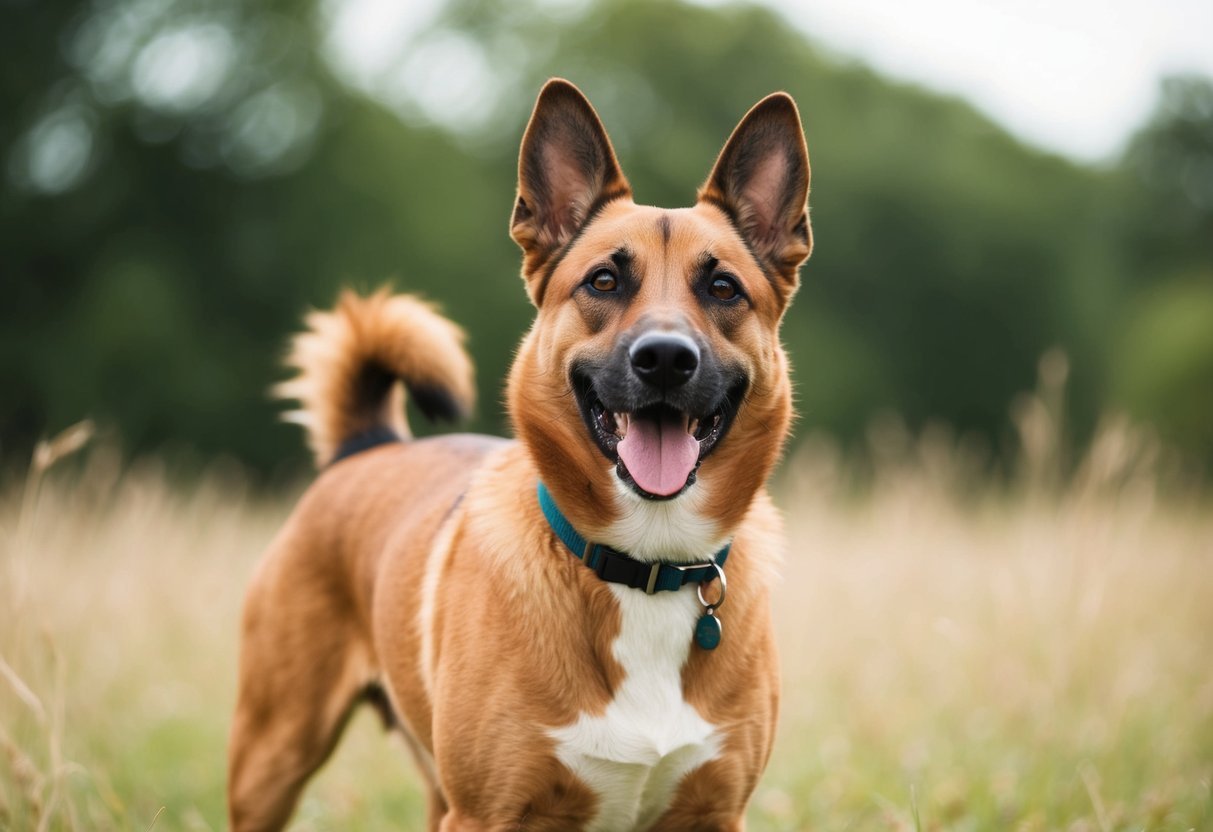
When your dog gives a slow wag with a relaxed body, it often means they’re feeling calm and friendly.
This wag can signal that your dog is happy but not overly excited.
You might notice this type of wag when your dog is greeting someone familiar.
It shows they’re comfortable in their surroundings and are in a good mood.
Sometimes, a slow wag may also indicate that your dog is unsure about something.
They could be cautiously checking out a new person or unfamiliar environment.
In these moments, it’s a good idea to watch their other body language signs.
Look for a relaxed posture or a soft expression.
This can help you understand what your dog is feeling.
Overall, a slow mid-level wag is generally a positive sign.
It shows your dog is relaxed and open to interaction, but it’s always good to be aware of their overall body language as well.
This way, you can better respond to their needs.
4) Helicopter Tail
When you see your dog wagging its tail in a circular motion, you might notice it resembles a helicopter.
This is often called a “helicopter tail” or “propeller wag.”
This joyful tail movement usually means your dog is happy and excited to see you.
You might see it when you come home or during playtime.
The helicopter tail shows your dog’s friendly and playful mood.
It’s a clear sign that they are feeling good and want to interact.
Keep an eye on the rest of their body language to get a full picture.
Loose body posture and a lively demeanor will likely accompany this wagging.
If your dog is showing this tail signal, you can feel free to engage and enjoy the moment with them.
Your furry friend is ready to have some fun!
5) High and Still
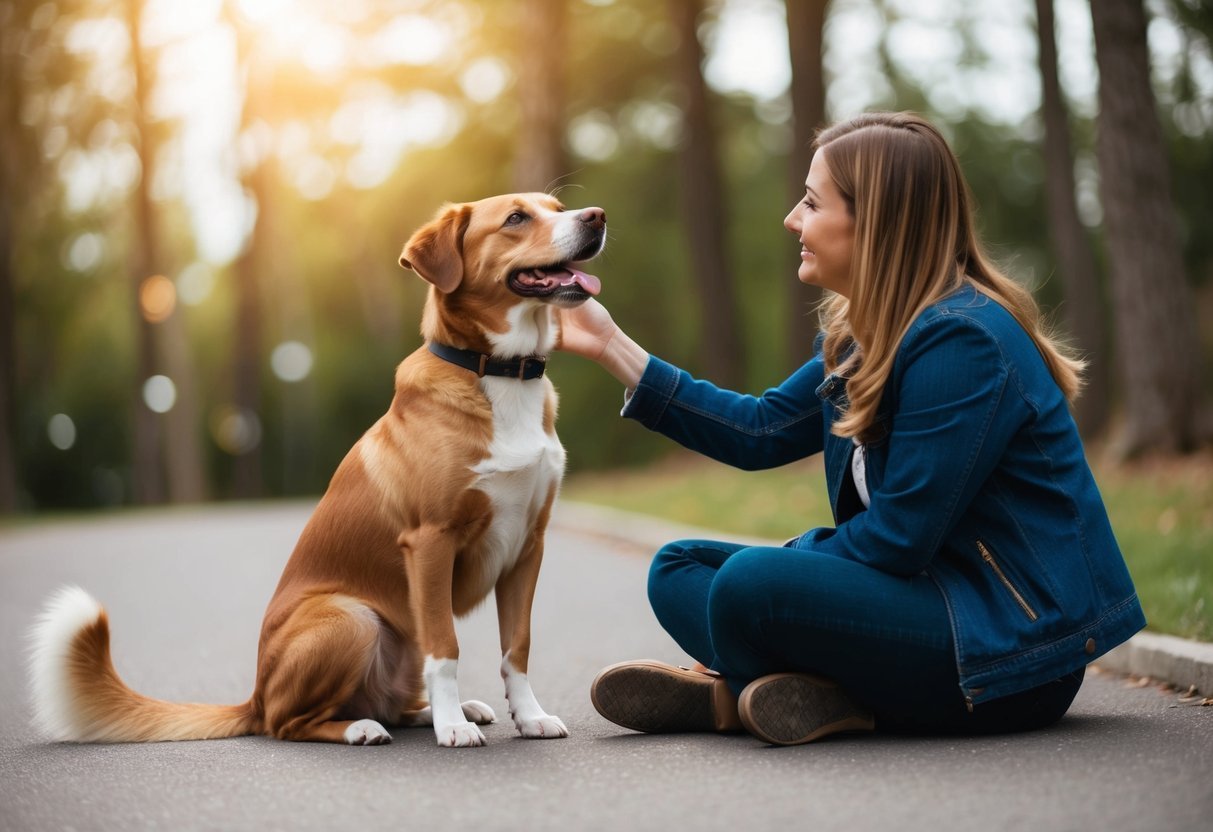
When your dog holds their tail high and keeps it still, it can mean a few different things.
This position often shows that your dog is feeling confident and alert.
They might be watching something that has caught their attention.
A high, still tail can also suggest that your pup is unsure or curious about the situation.
They are ready to react but haven’t decided whether to approach or retreat.
Pay attention to other body language signs, too.
If their ears are perked up and they are focused, it likely means they are intrigued.
If they seem relaxed, it could indicate comfort in their environment.
Understanding these signals helps improve your communication with your dog.
Recognizing this high, still tail signal can help you respond appropriately, whether that means encouraging exploration or providing comfort.
6) Relaxed Wag in Neutral

When your dog has a relaxed wag in a neutral position, it shows they are calm and comfortable.
This tail position is usually parallel to their body.
It’s a great sign that your pup is not feeling threatened.
You might see this relaxed wag when your dog is enjoying a casual day at home or spending time with you.
It’s their way of saying they feel safe and happy.
Pay attention to the wagging itself—smooth and gentle movements indicate they are at ease.
If their tail is wagging with a bit of a curve at the end, it’s an extra sign of contentment.
In this state, your dog is open to interaction and ready for some pets or playtime.
It’s a perfect moment to bond and enjoy each other’s company.
Be sure to look for other cues in their body language.
Relaxed ears and a soft facial expression will further confirm that they are feeling good.
Understanding Your Dog’s Tail Movements
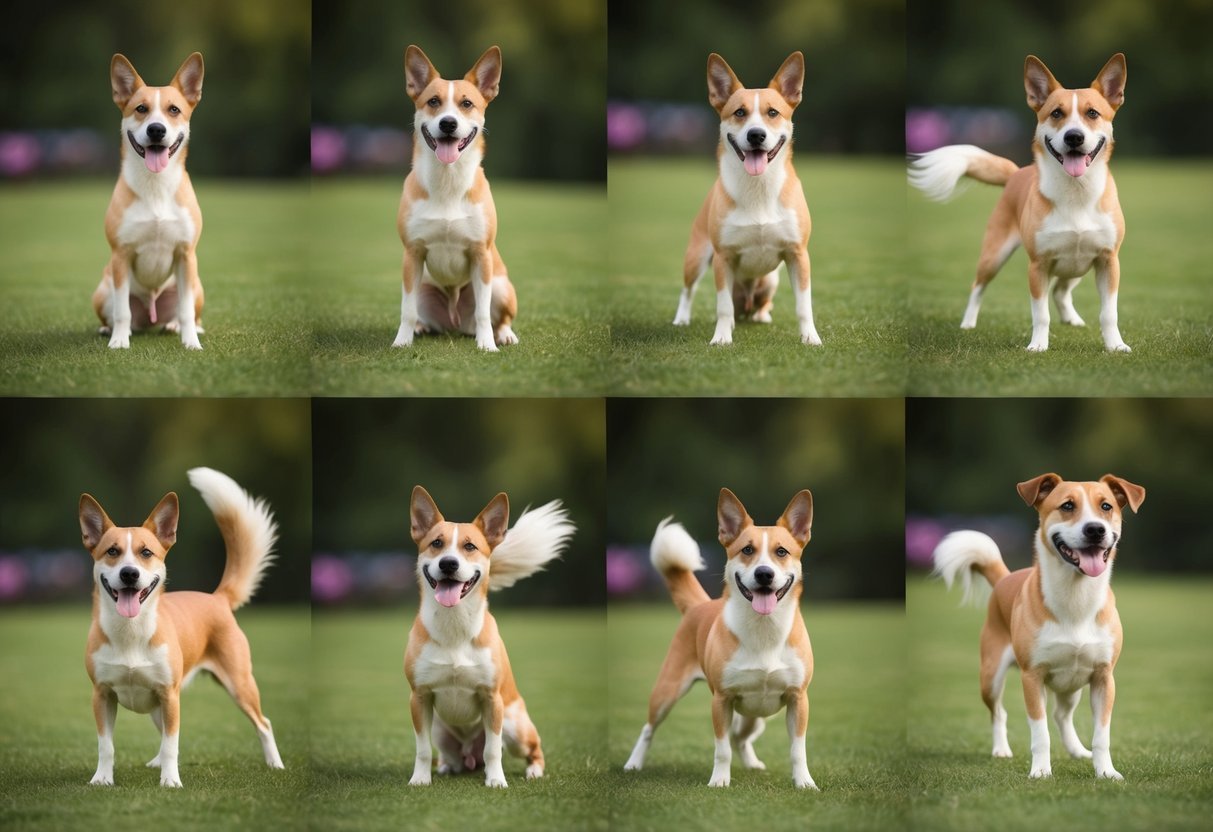
Your dog’s tail is an important tool for communication.
By observing their tail movements, you can gain insights into their feelings and intentions.
Understanding these signals can help you respond to your dog’s needs and enhance your bond.
Why Tail Signals Matter
Tail signals are key to understanding your dog’s mood.
Different positions and movements communicate various emotions.
For instance, a wagging tail usually indicates excitement or happiness.
Meanwhile, a tail tucked between the legs can mean fear or submission.
Here are some common tail positions and what they mean:
- High and Wagging: Happy and excited.
- Straight Up: Alert and curious.
- Low or Tucked: Scared or anxious.
- Slow Wagging: Cautious and unsure.
Recognizing these signals can help you better understand your dog and improve your interactions.
Common Misinterpretations
It’s easy to misunderstand what your dog’s tail movement really means.
For example, many believe that a wagging tail always indicates friendliness.
In reality, it can sometimes mean the opposite.
A high, stiff wag can signal agitation or annoyance.
Another common misinterpretation is associating a tucked tail only with fear.
While it often indicates fear, it can also mean submission in certain situations.
To avoid confusion, pay attention to your dog’s entire body language.
Look at their ears, eyes, and posture to gather a clearer picture of how they are feeling.
This will help you respond appropriately to their needs.
Communicating Through Wagging
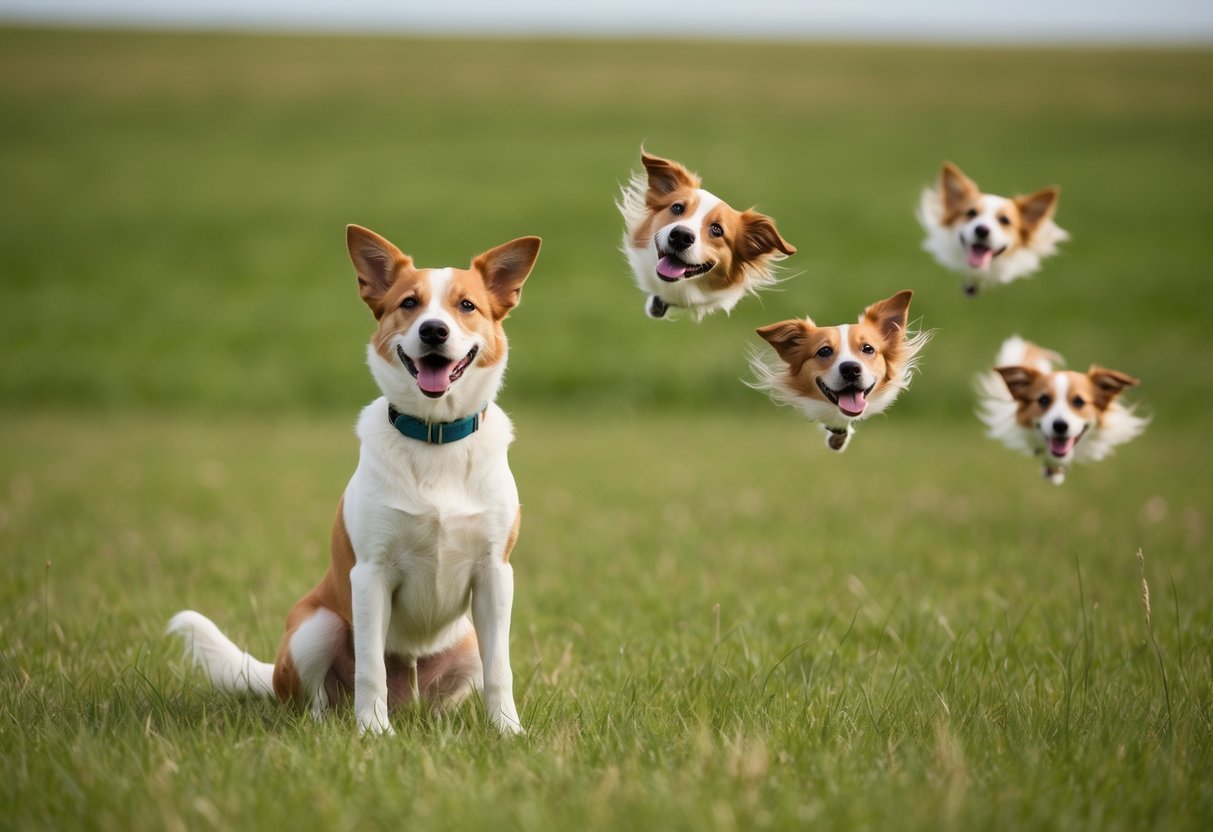
Dogs use their tails to express feelings and intentions.
Wagging is a key way they interact with you and their environment.
Understanding these signals can deepen your bond and help you respond correctly to your dog’s needs.
The Science of Wagging
Wagging is not just a sign of happiness.
It’s a form of communication that reflects what’s going on in your dog’s mind.
Research shows that the speed and direction of a wag can indicate different emotions.
For example, a fast wagging tail usually signals excitement or joy.
In contrast, a slow wag can indicate uncertainty or wariness.
The height at which your dog holds its tail also matters.
A tail held high often suggests confidence, while a low tail may show submission or fear.
Different Wagging Patterns
Not all wagging is created equal.
Several patterns can convey different messages, and being attentive can help you understand your dog better.
- Helicopter Tail: When your dog’s tail spins in a circle, it’s likely very happy, often seen while greeting you.
- Rigid Tail and Narrow Wag: A stiff tail that vibrates in a small range indicates your dog is alert or focused on something.
- Side-to-Side Wag: A tail wagging to the right usually suggests a joyful mood, while a left-side wag might indicate anxiety.
Pay attention to these cues for clearer communication with your furry friend!
Frequently Asked Questions
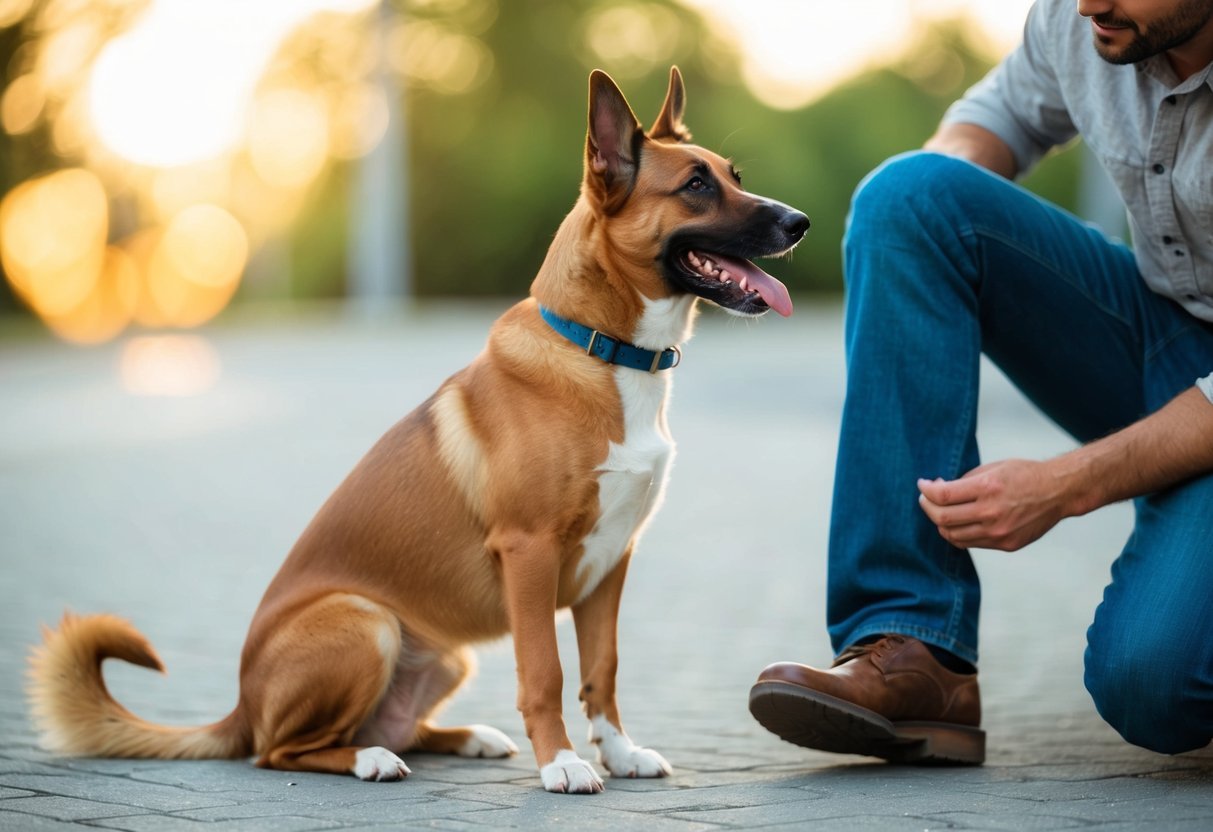
Dogs use their tails to express a range of emotions.
Understanding these tail signals can help you better connect with your furry friend and respond appropriately to their feelings.
What do different dog tail positions indicate about their mood?
The position of a dog’s tail can reveal a lot about how they feel.
A tail held high usually means a dog is happy and confident.
In contrast, a tail tucked between the legs often signals fear or submission.
Can you tell if a dog is aggressive by its tail movements?
Yes, tail movements can indicate aggression.
A stiff, high-held tail might mean a dog feels threatened or is ready to defend itself.
Quick, whip-like movements can also suggest agitation or a warning to back off.
What does it mean when a dog’s tail is curled up?
A tail that curls tightly over the back can mean that your dog is excited or happy.
This position is common when they are eager to play or greet someone.
However, if it’s curled and tense, it might indicate anxiety.
How can I decipher my male dog’s body language?
To understand your male dog’s body language, focus on his tail, ears, and overall posture.
A wagging tail high in the air usually shows excitement, while ears pulled back and a lowered tail can indicate unease or submission.
What are the common signals dogs give when they’re trying to communicate?
Dogs communicate through various signals including tail wags, barks, and body posture.
Pay attention to how their tails move.
A slow, low wag can mean uncertainty, while a fast wagging tail often shows happiness.
Is tail flagging a sign of excitement or stress in dogs?
Tail flagging can indicate both excitement and stress.
A fast wagging motion might indicate that a dog is happy.
In contrast, a slow flagging motion can suggest that your dog is feeling anxious or unsure about a situation.

